ULTRA FOGGER
Frost Control Machine – Ultra Fogger Thermal Fogging
DocumentsIt is more economical than frost fans and any other frost combat method. Its mobile, vehicle-mounted design allows to protect far larger areas, delivering full frost protection down to -7°C, and partial protection at lower temperatures.
Capacity: 10 – 20 ha
In calm conditions, a single machine can protect up to 20 hectares, while in windy conditions one machine can protect 10 hectares.
Description
Description
Reflector effect with artificial cloud technology: With its three-dimensional curtain feature, artificial cloud technology provides protection from radiation frost damage that occurs during clear and windless weather. It maintains the current temperature of the land and reflects the radiation energy (heat) back to the ground. It acts as a thick blanket drawn over the field protecting the heat of the ground.
Anti-freeze effect with moisturizing oil vapor: The sprayed artificial cloud is the vapor form of an oil solution. It temporarily creates a very thin layer of oil over the blossoms. Penetrating between water molecules that tend to crystallize and freeze, it increases resistance to cold and provides an anti-freeze effect. It also delays and prevents conduction damage caused by the red-colored radiation energy occurring at sunrise.
Protection effect with inversion: The cold air mass that causes inversion is heavier than the atmosphere and tends to sink toward the ground. The sprayed artificial cloud curtain is lighter than the atmosphere and tends to rise upward. Due to the physical principle that cold and hot air cannot mix, the artificial cloud curtain prevents the cold air mass accumulated over the land from descending to the ground on the crops.
Other applications:
Thermal fogging machines can also be used for pest and fungus control. For pests that become active in hot weather and are difficult to combat—such as red spider mites, mealybugs, aphids, psyllids, codling moth, tuta, whiteflies, thrips, gray mold, powdery mildew, leaf spot disease, and others—thermal fogging machines offer allows the operator to save money and time. Oil-based spraying is 12 times more effective compared to water-based spraying and can reach much longer distances. Since there is not a single spot left untouched by the smoke particles, contact-effect pesticides can easily reach and neutralize fungal diseases or pests. This increases both the harvest amount and quality of crops.
Advantages:
✔ One Ultra Fogger should be allocated per 20 ha in calm weather and per 10 ha in windy weather.
✔ Licensed by the Republic of Turkey Ministry of Agriculture and Forestry.
✔ Eligible for grant support under Rural Development Projects by the government depending on each country.
✔ More economical than frost fans and other frost fighting methods, and provides much greater area coverage. 1 single tank(200lt) covers 20 hectares in 2 hours, and protects the land up to -7 degrees.
✔ Being vehicle-mounted and portable, it can easily be transported to different areas.
✔ Offers spare parts and service advantages.
✔ With a minimum lifespan of 10 years, it is advantageous in terms of amortization.
What is the protection capacity?
Why is capacity important?
In fighting agricultural frost, time is of the essence. When the air temperature is around 1 °C, every point of the land must be covered with a thick layer of smoke within 30 minutes. If a thermal fogging machine is used on an area beyond its capacity, sufficient fog density cannot be achieved; the smoke becomes sparse and the protective effect significantly decreases.
Smoke can remain in the air for up to 6 hours in fully closed greenhouses; in calm open fields, this duration is around 3 hours on average. However, over time, the density of the smoke decreases. Therefore, even in greenhouses, it is recommended to fog again every 3 hours to refresh the density.
Conditions in open fields are more sensitive. Even the slightest wind can disperse the smoke, reducing its effect or carrying it to another area. Therefore, each machine must be able to create a dense and thick artificial cloud curtain within half an hour in the area it is responsible for/ parcelled for. Because the thicker and more uniform the smoke, the higher its protection against frost damage to the blossoms.
What temperature difference can the machine achieve?
How Thermal Fogging Protects Against Agricultural Frost
Thermal fogging machines are not heaters — they don’t raise the surrounding air temperature. Instead, they protect crops by preserving the heat that’s already there.
Think of them like a blanket on a cold night: a blanket doesn’t create heat, but it traps your body warmth and keeps the cold air away. Similarly, a thermal fogging machine creates an “artifical cloud” that reflects plants’ and ground’s own heat back to them.
The artifical fog also delays ice formation in two additional ways:
Antifreeze effect: A thin oil-based coating on flowers stops water molecules from clumping into ice crystals, so even at –10 °C, frost won’t form.
Inversion effect: It is already explained that the artificial cloud acts like an emergency aliminium foil blanket, reflecting thermal radiation back toward the plants and slowing cooling. Inversion effect: as in the law of physics, the lighter artificial cloud rises and pushes away the heavier cold air which tries to sink on the plants. The fog curtain works asa shield, prevents the cold air from reaching and damaging the crops by pushing it away.
Note that most damaging frost in agriculture isn’t caused by low air temperature alone, but by radiation frost — happens on windless and cloudless sky. In such calm nights earth’s heat escapes upward and the ground cools rapidly. Wind and clouds help prevent frost:
Wind stirs warmer air and cold air, prevents cold air from settling above the plants.
Clouds act like a blanket, reflecting heat back down.
One way to picture this is with a cement mixer: if the drum stops, the cement mixture settles and hardens; if it keeps turning, the contents stay mixed and workable. In the same way, wind keeps air moving and prevents extreme cooling at crop level.
Another example is that it is often observed that frost does not form and flowers are not damaged during snowfall. In short, cold air or snow is not the actual cause of frost. Although subzero temperatures create a suitable environment for frost formation, the real cause is cloudless and windless static air conditions. In such weather, water molecules in the atmosphere condense and turn into ice crystals. At sunrise, the high radiation (heat) in the red wavelength range (700nm) rapidly contacts the flower surfaces covered with ice crystals. During this contact, a conduction effect occurs, and plants suffer the most serious damage at this stage. The sudden heat transfer through conduction burns the flower tissues in the ice crystals and causes permanent damage. The artificial cloud curtain created by thermal fogging machines prevents the high heat of the red light at sunrise from directly contacting the flowers, and also acts as an antifreeze by delaying heat transfer (conduction) and preserving the flowers.
Details on the conduction effect can be found in our upcoming articles or information booklets.
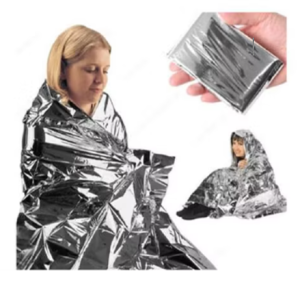
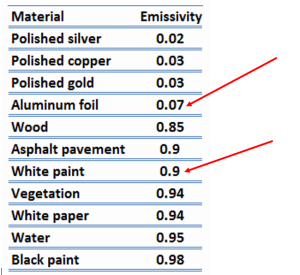
What are the advantages over frost fans?
Frost fans can provide effective protection against moderate frost events, up to -4.4°C. However, their protection capacity becomes insufficient during severe frost conditions below this temperature. Frost fans work by mixing warm air with cold air to induce molecular movement, thereby creating heat transfer to prevent frost. But when the temperature drops below -4°C, there isn’t enough warm air to mix, so they cannot protect flowers and fruits. In fact, this situation can convert radiation frost (calm frost) into advection frost (windy frost), leading to increased burning and damage to crops.
Additionally, frost fans are known not to operate in light windy conditions due to safety reasons. This makes it impossible to fight frost early. Installation of frost fans requires electrical infrastructure or generator support, which adds extra cost and time due to site works.
In contrast, thermal fogging machines offer a triple protection mechanism: reflector effect, anti-freeze effect, and inversion effect. Thus, they provide protection up to -7°C in calm environments and partial protection in more severe cold conditions, down to -10°C. Increasing the number of machines, reducing parcel sizes, and using suitable fogging liquids can further improve success rates.
Thermal fogging machines are easily transportable to desired fields due to their vehicle-mounted portable design and can be parceled accordingly. Maintenance and repair processes are much more practical and faster compared to frost fans. Moreover, thermal fogging machines cover a larger protection area than frost fans. Equipment costs are lower, and additional expenses per hectares are much more economical.
Does it provide guaranteed protection?
If the machine is running and fogging, it means it has successfully performed its task. However, successful frost protection depends not only on the machine’s operation but also heavily on weather conditions such as temperature, wind speed, and the operator’s technical and practical knowledge. Protection is easily achieved in light frost conditions between 0 °C and -2.2 °C or moderate frost between -2.2 °C and -4.4 °C. However, in severe frost events below -4.4 °C, the success rate may decrease. Saving 60% or even 100% of the crops depends on the number of machines used, the size of the parceled area, and the chemical properties of the oils applied.
On nights when temperatures are expected to drop below -4 °C, it is recommended to use two different fogging liquids:
Before and during frost, use Vegetable Glycerin (which has a strong anti-freeze effect but produces thinner smoke), and
Before sunrise, before the red light spreads, use AV fogging oil, SR fogging oil (which produces denser white smoke but has a lower anti-freeze effect). In summary, the anti-freeze effect of vegetable glycerin vapor combined with the reflector effect of the bright white artificial cloud curtain created by AV or SR fogging oils allows for saving more crops and provides maximum benefit at temperatures below -4 °C. The success rate varies depending on the operator’s technique and application knowledge. Therefore, it is strongly recommended to utilize the theoretical and practical guides prepared by our company and to strictly follow our application instructions. Otherwise, it may take at least 2 years for an operator to gain sufficient experience.
What kind of liquid should I use for the fog?
✅ Vegetable glycerin; Used for anti-freeze effect in greenhouses and open fields. Vegetable glycerin is viscous and should be diluted with 30% to 40% water to become fluid. The smoke density and whiteness produced by vegetable glycerin is less compared to other oils. However, it is preferred for its anti-freeze property rather than reflector effect.
✅ AV fogging oil; Used only in open fields for reflector effect, not recommended for greenhouse applications. Due to its longer molecular chain structure compared to other oils, it moves slower and provides longer protection over the field. It produces bright white smoke maximizing the emissivity benefit. We recommend obtaining enough from our company to fog for at least 1 hour during the time when the red light appears at sunrise.
✅ LP fogging oil; Used only in greenhouses for reflector effect, not recommended for open field use. It produces bright white smoke that benefits from emissivity. Recommended to be used during the sunrise period when red light occurs.
Important Note 1: The oil chosen as smoke liquid must be fluid enough for the machine to spray properly.
Important Note 2: In open fields, and if cold temperatures up to a maximum of -4 °C are expected, the vapor of either [Diesel], or only [AV fogging oil] can provide successful protection.
If colder temperatures below -4 °C are expected, in open fields, a combined treatment using the vapors of [Vegetable glycerin] and [AV fogging oil] will help save more crops.
Throughout the night, smoke is sprayed over the field with vegetable glycerin vapor to benefit from glycerin’s anti-freeze effect. Vegetable glycerin vapor forms an invisible thin oil layer around the flowers. The glycerin vapor penetrates between the two hydrogen bonds of water molecules, and its anti-freeze effect delays and prevents icing.
At sunrise, we recommend spraying “AV fogging oil” vapor. The artificial cloud curtain should be bright white, dense, and thick. It must block the red light emitted by the sun at sunrise at the highest level. The red light (700 nm wavelength) emitted at sunrise is the longest and most intense wavelength of the sun. The term radiation frost originates from this. Although flowers surviving the cold exposure throughout the night manage to endure, the most damage occurs due to the red light emitted by the sun. This phenomenon is called conduction damage (heat transfer). Cold flowers lightly covered with frost suddenly exposed to red light (high heat) burn quickly, their surfaces get damaged, and they lose their vitality.
If the flowers are coated with glycerin oil that acts as an anti-freeze, and the field is covered with a dense artificial cloud curtain due to lack of wind at sunrise, the red light (high heat) at sunrise cannot cause conduction damage.
A simple example of conduction damage: Place fish on a hot pan without oil. The fish will burn quickly due to fast heat transfer (conduction) and stick to the pan causing surface damage. If oil is added to the pan, it creates a thin layer between the hot pan and cold fish, preventing direct heat contact and acting as a delay.
During radiation frost, flower surfaces are cold. The thin oil layer formed around flowers with vegetable glycerin prevents the red light heat from directly transferring to the flowers. Thanks to its anti-freeze effect, this layer delays the heat transfer to the flower surface and protects the flowers from conduction damage.
What is the daily cost?
The service life of the machine and equipment is 15 years. Excluding machine depreciation costs. during an overnight frost operation, two costs will be incurred only: fogging liquid and engine fuel cost. The daily operating cost varies depending on the duration of frost conditions. Radiation frost may last approximately 2 hours in some regions, while in others it may continue for up to 10 hours.
For this reason, users should calculate their costs based on the frost duration specific to their region, taking into account the information provided below.
IMPORTANT: In the calculations below, the highest protection-level oils and the longest agricultural frost scenario have been considered, and a 10-hour frost protection period has been used as the cost example. Based on the radiation frost duration in your region, you can easily adapt the calculation by proportionally adjusting it at a 1/10 ratio.
SM600 Daily Operating Cost (Low Capacity)
Protection Capacity: 3 ha (30 decares)
Recommended Consumption Rate: 20 liters/hour
Cost Components (for 10 hour frost fight)
Vegetable Glycerin Consumption
20 L/hour × 8 hours = 160 L
160 L × 3.19 $/L = 510 $
AV Fogging Oil (Aviation Oil)
20 L/hour × 2 hours = 40 L
40 L × 3.51 $/L = 140 $
Gasoline Fuel Consumption
2 L/hour × 10 hours = 20 L
20 L × 1.10 $/L = 22 $
Summary:
Cost of 10-Hour Agricultural Frost Protection for a 30-Decare Area is:
Total daily cost: 672 $
Daily cost per decare (for 30 decares): 672 $ / 30 = 22 $/decare
This calculation has been prepared by considering the highest-quality oils, the lowest and extreme temperature scenarios, and consumption values that support the highest level of crop recovery, in order to achieve maximum protection performance against agricultural frost. This cost table reflects a scenario providing continuous fogging for 10 hours, representing the highest level of frost protection.
Using the 1-decare / 1-hour cost formulas provided below, you can easily calculate your own costs based on the size of your land and the frost duration hour in your region.
Cost for 1 hour per decare
672 $ / 10 hours = 67.2 $ (cost for 1 hour over 30 decares)
67.2 $ / 30 decares = 2.24 $ (cost for 1 decare for 1 hour)
Example
Land area: 20 decares
Daily frost protection duration: 4 hours
Protection period: 3 days
Formula
[20 × 4 × 3] × 2.24 $ = 538 $
Above is the total cost to protect a 20-decare area against agricultural frost for 3 days, and by operating the machine 4h each day.
For this reason, it is recommended that users perform their own cost analysis based on the number of frost days and hours in their region, historical climate data, and on-site experience.
SM700 Daily Operating Cost (Medium Capacity)
Protection Capacity: 10 ha (100 decares)
Recommended Consumption Rate: 60 liters/hour
Ultra Fogger Daily Operating Cost (High Capacity)
Protection Capacity: 20 ha (200 decares)
Recommended Consumption Rate: 100 liters/hour
FOGGING OIL Kg Prices
Vegetable Glycerin: 3.19 $/kg
(A special ready-to-use mixture containing 25% water, potassium nitrate, glucose, and other components. Unit price applies to IBC tanks only. Sale in small quantity canisters is not available.)
AV Fogging Oil: 3.51 $/kg
(Aviation oil. Kg price for IBC tanks.)
LP Fogging Oil: 3.51 $/kg
(For greenhouse applications only. Kg for IBC tanks.)
Diesel Fuel: 1.20 $/L
(For open-field applications only to replace Aviation oil. Not supplied by our company.)
(These prices are provided as of 01.12.2025 for the purpose of estimating approximate per-decare costs. Prices may vary. Please contact our company for current pricing.)
When should fogging start?
During radiation frost nights, the wind does not suddenly stop completely and the temperature does not drop abruptly. First, the temperature begins to decrease slowly in intervals. Then, sharp drops of 3-4 degrees in temperature are observed. If after 1-degree drops, a sharp 3-4 degree drop occurs, it is certain that a radiation frost event will happen shortly.
Meteorological agricultural frost warning systems provide information for 5-day periods with frost risk. On risky nights, vigilance is kept and necessary protective measures are taken. When the temperature drops to +1 degree and wind speed falls below 10 km/h, the frost fight should begin.
There is no exact start time for agricultural frost; it is entirely relative. Sometimes it can last 1 hour at sunrise, sometimes it can continue for 10 hours starting from 1:00 AM. Therefore, temperature and wind speed data are very important to estimate the frost start time.
If there are smart meteorological information systems in the field, temperature and wind speed are monitored every 30 minutes. If after a gradual temperature drop, a sudden 3-4 degree decrease is observed, it is confirmed that agricultural frost will occur shortly and fight against frost should start.
Farmers without smart meteorological warning systems use traditional methods such as observation with a portable thermometer and burning straw or tires in risky areas to observe the smoke. If the smoke no longer floats or disperses over the field, it means an inversion layer with very cold air has formed. In such cases, frost fight with SM600 should start immediately. Instead of relying on straw or tire smoke, wind speed can also be observed by hanging a flag or streamer about 3-4 meters high.
When wind speed falls below 10 km/h and temperature reaches +1 degree, artificial fog with SM600 should be applied to prevent further temperature drops and to preserve the existing heath. The risk begins the moment the wind blows at 10 km/h. At this stage, the temperature may suddenly drop to -1 degree and wind speed may suddenly fall to 0 km/h. Starting protection early in such situations is a great advantage.
With the help of light wind, artificial oily fog is sprayed over the entire field, surrounding the flowers with an oil layer. This serves as anti-freeze effect. When wind speed drops to zero, the protection capacity of the artificial cloud doubles. The artificial cloud curtain stays suspended above the crops, and acts like a blanket providing protection through heat reflector effect.
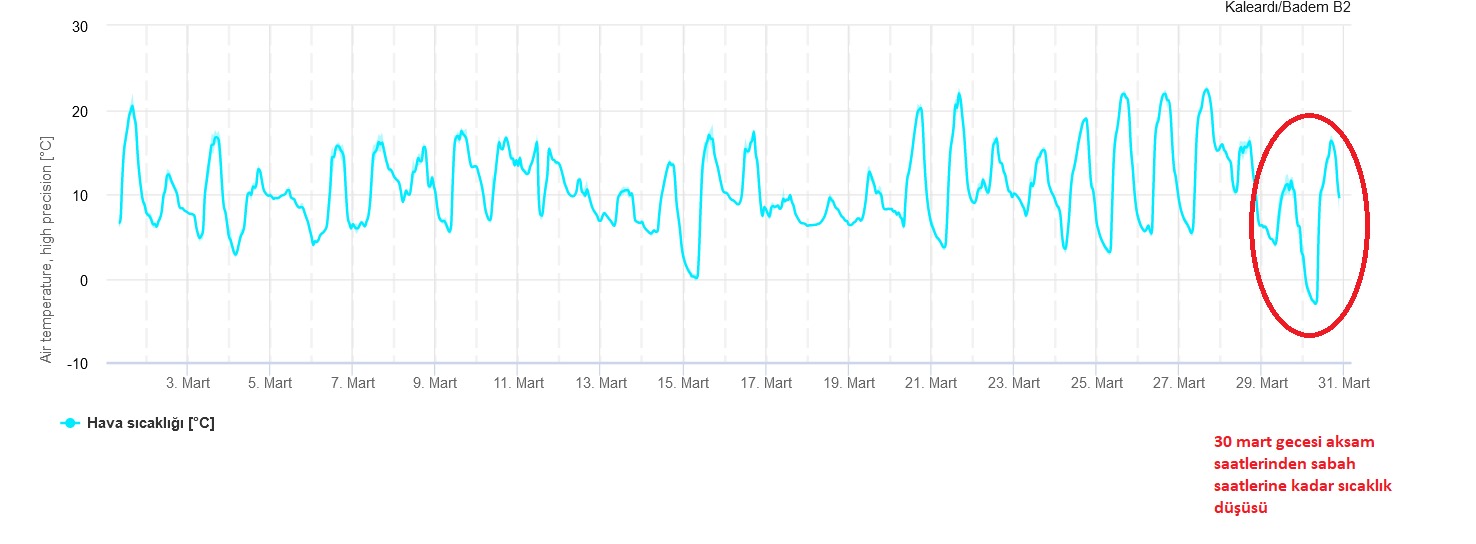 In the above graphic, published by the meteorology center on 30th of March, we see a sudden decrease of heat below zero degrees, where frost happened.
In the above graphic, published by the meteorology center on 30th of March, we see a sudden decrease of heat below zero degrees, where frost happened.
 In above graphic, we see that in the night of March 30th at 22:00, the temperature was 7 degrees and dropped to 2/3 degrees by 23:00 and 00:00. Such a sharp drop in about 1 hour is a warning of frost.
In above graphic, we see that in the night of March 30th at 22:00, the temperature was 7 degrees and dropped to 2/3 degrees by 23:00 and 00:00. Such a sharp drop in about 1 hour is a warning of frost.

And here we observe the wind speed on another night. While at 21:00 the wind speed was 14km, at 00.00 the wind speed became 0 km. This shows that frost formed that night.
Does the fog leave any residue on crops?
Even if you want, smoke cannot leave residues nor prevent pollination. Since the vapor form of oil is sprayed, the created oil layer lasts up to 12 hours at most. Afterwards, it evaporates and completely disappears by mixing into the atmosphere. The formation of a 12-hour oil layer positively contributes to the protection during agricultural frost. The thin oil layer created is microscopic in size and cannot be seen with the naked eye. Because the smoke particles are very small, they cannot clog the pollen tube or prevent pollen from reaching the ovary.
How dense should the fog be?
A dense white colored artificial cloud should be created over the land. The dense white colored artificial blanket increases the emissivity (radiation reflection rate), helping to retain the warm heat on the ground surface. If one tries to protect the land with a sparse thin and see through smoke, as when straw or tire is burnt, this indicates that the protection is very low, radiation is not being sufficiently reflected to earth, and the earths heat is escaping into athmosphere.
If the human eye cannot see behind the smoke curtain, it is opaque and dense, it means a successful radiation reflection (reflector effect) is achieved.
Is it necessary to constantly move around the field?
The wind speed does not suddenly stop but gradually slows down to around 10 km/h and the temperature is +1 degree, at this stage fogging must be started. Even if the artificial cloud curtain effect is not utilized, the anti-freeze effect will still be beneficial. This is because there is a risk of a sudden 3-degree drop, and waiting for zero degrees or wind speeds below 1 km/h may result in “starting the frost combat too late”.
Fogging should be done in the direction of the wind. Fogging is performed by moving back and forth at a 90-degree angle to the wind direction, and with the help of a light breeze, the land is quickly and easily covered with the fog curtain. In windy conditions, this work area should not be abandoned. Fogging should not be done in other parts of the land. Doing otherwise increases the risk of flower damage. However, when the wind completely stops and no wind assistance is available, the operator should quickly move around other areas of the land and manually distribute the fog that the wind no longer spreads, saving time and protecting a larger area.
Remember, when the wind is blowing, protection capacity is halved. Once the wind stops, capacity is doubled.
How is pest control application done?
Thermal fogging machines offer up to 12 times more efficient spraying compared to garden sprayers. These machines perform oil-based spraying, while sprayers apply water-based pesticides. Since water-based pesticide droplets are larger, they quickly fall to the ground. In contrast, oil-based droplets are much smaller and can remain suspended in the air for a longer time. Water-based pesticides evaporate quickly at atmospheric temperatures and lose their effect, whereas oily pesticides are more resistant to evaporation and can reach farther distances.
Spraying 1 decare of area takes only 1 minute. This results in significant savings in time and labor costs. Compared to garden sprayers, in terms of time, spraying can be done 60 times faster and more easily.
It also offers great advantages in pesticide consumption and cost: At least 50%, and on average 90% savings are possible. Since the pesticide is applied in fog form, it does not drip onto the plant or soil, providing maximum effectiveness. The fog contacts every area, even under the leaves, effectively neutralizing pests at once.
Compatible with Various Pesticide Formulations EC, SC, and POWDER formulations can be applied. EC (Emulsion Concentrate) pesticides can mix directly with oil, while other formulations require a combination of oil, water, and pesticide. You can obtain “LP fogging oil,” which mixes with water, from our company. There are EC formulation (fluid) pesticides available in the market that effectively neutralize the pests you need.
When you prefer a pesticide, you should prioritize EC formulations; if no suitable solution is found, then other formulations (SC or powder) are recommended. With thermal foggers, you can complete the entire season with 3-4 pesticide application: eliminate insects, viruses, fungi succesfully.
Much More Effective than Traditional Methods Thermal fogging machines heat pesticides and spray them as smoke with particle sizes around 10 microns. This method increases the pesticide’s effectiveness 12 times more, rather than decreasing it. Contact-effective pesticides spread homogeneously over wide areas and easily contact pests. For example, with a 5-liter mixture, thermal fogging machines produce approximately 2.39 trillion particles, while traditional sprayers produce only 190 billion particles with the same amount.
These machines ensure pesticides spread evenly and in a thin layer over plant surfaces. Thus, the pesticide remains airborne longer and contacts pests more effectively. At the same time, thermal fogger method causes less environmental harm and leaves no residue on plants. When pesticide is applied in fog form, there is no residue risk even with pesticides that have not yet reached the harvest waiting period. For example, a pesticide labeled with a 90-day harvest period can be applied in fog form with thermal fogger and export can be done residue-free in just 4 days. Thanks to this advantage, spraying can be safely done even if the harvest time is near, preventing product loss.
Reduces the Need for Systemic Pesticides Thermal fogging machines efficiently apply contact-effect insecticides and fungicides, eliminating the need for systemic pesticides. Systemic pesticides act through the pest’s ingestion and leave residues, resulting in high pesticide consumption. In contrast, spraying with thermal fogging relies on widespread use of contact-effect pesticides, providing a more cost-effective, environmentally friendly, and effective solution. This ensures effective pest population control and significant savings in the spraying budget.
Why is the machine's impact capacity is larger in Pest control, and less in Frost control?
It is important to note that in pest control, there is no race against time, unlike in frost protection.
While in frost protection the machine must be parceled to 20ha maximum (because if it is parceled to a bigger land, the artificial fog created in a short time wouldnt be dense enough, and wouldn’t have enough reflectivity and protectivity). On the contrary, in pest control activity, the smoke doesn’t need to be dense, and you have no time constraint to treat a larger land.
How is liquid fertilization application done?
Nowadays, the costs of pesticides and fertilizers are increasing day by day. Therefore, maximizing savings is extremely important for agricultural producers. In liquid fertilizer applications made with traditional garden sprayers, approximately 90% of the fertilizer is wasted; only about 10% makes contact with the leaf. Moreover, this contact usually occurs only on the underside of the leaf, while the upper surfaces mostly do not receive any fertilizer. A large portion of the fertilizer falls onto the plant stem or directly onto the soil, failing to achieve the intended effect.
However, by applying fertilizers in fog form to the foliage, the entire upper and lower surfaces of the leaf are covered. There isn’t a single spot left untreated. Thus, the fertilizer reaches both sides of the leaf in the most economical way. Additionally, the fertilizer applied with this method is easily absorbed through the stomata under the leaf and incorporated into the plant’s system. This increases efficiency and results in significant savings on fertilizer costs.
Fertilizer applications may need to be done at somewhat more frequent intervals compared to sprayers until the desired yield is achieved.
User Videos
Technical Information
Additional information
| Engine | 10 Hp Briggs & Stratton, 306cc, gasoline, 1 cylinder, 4 stroke, air cooled, electric started |
|---|---|
| Pump | Positive displacement gear pump |
| Engine Fuel Tank | 5.3 L, steel, gasoline, approx. consumption 1.3 L/h |
| Chemical Tank | 200 L, stainless steel |
| Oil Burner Fuel Tank | 60 L, stainless steel, diesel, approx. consumption 8.5 L/h |
| Chemical Consumption | 50~500 L/h (Adjustable) |
| Battery Type | 12 V, 60 Ah |
| Spray Droplet Sizes | 1~100 µm (Adjustable) |
| Remote Control | 6 m cable, remote control on/off, engine start/stop, heating chamber on/off, fog on/off, fog rate low/high, operating time counter, temperature display |
| Air Velocity At Nozzle | 68 m/s |
| Noise Level | 84 dB(A) |
| Weight | Empty 210 Kg, Full 475 Kg, Shipping weight 310 Kg (without tank) |
| Dimensions | 89x201x80 cm (with nozzle), Shipping dimensions 96x151x99 cm (W,L,H) (without tank) |
| Origin | Made in Turkey |
| Warranty | 2 years |
| MOQ | 1 unit |


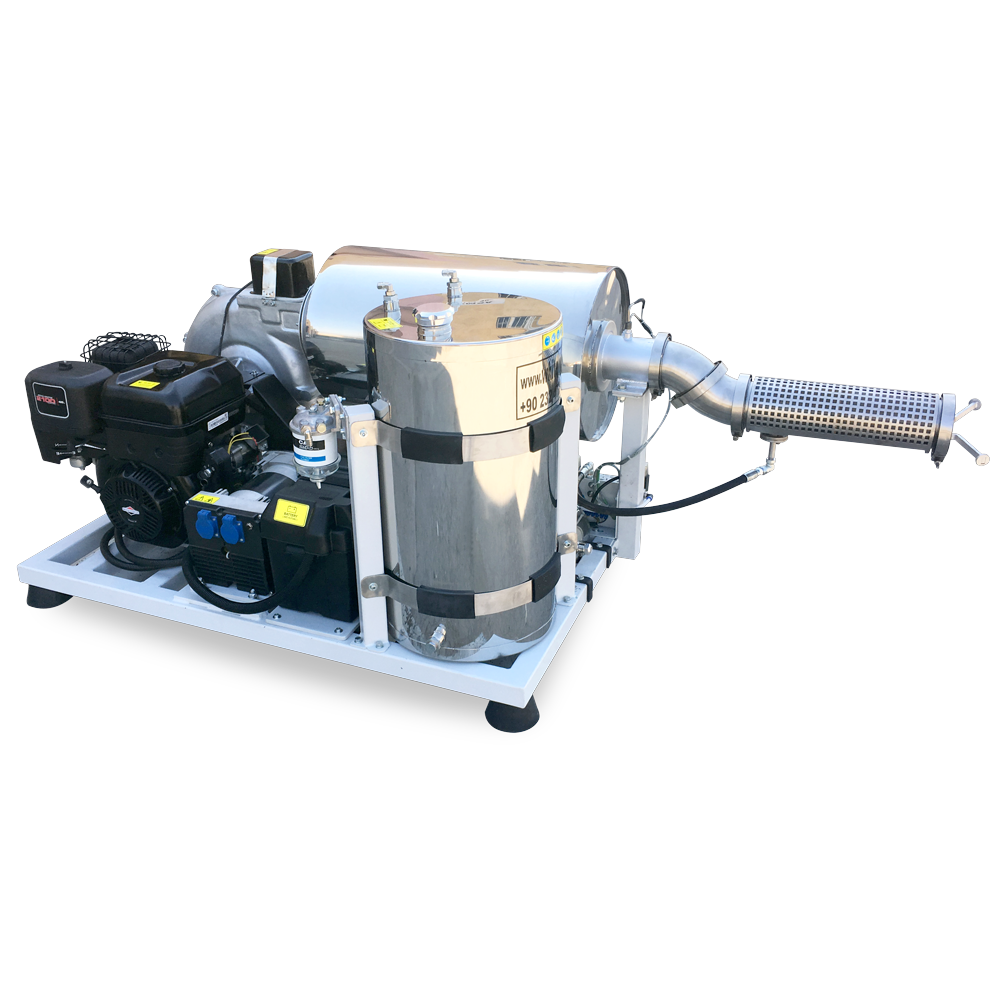
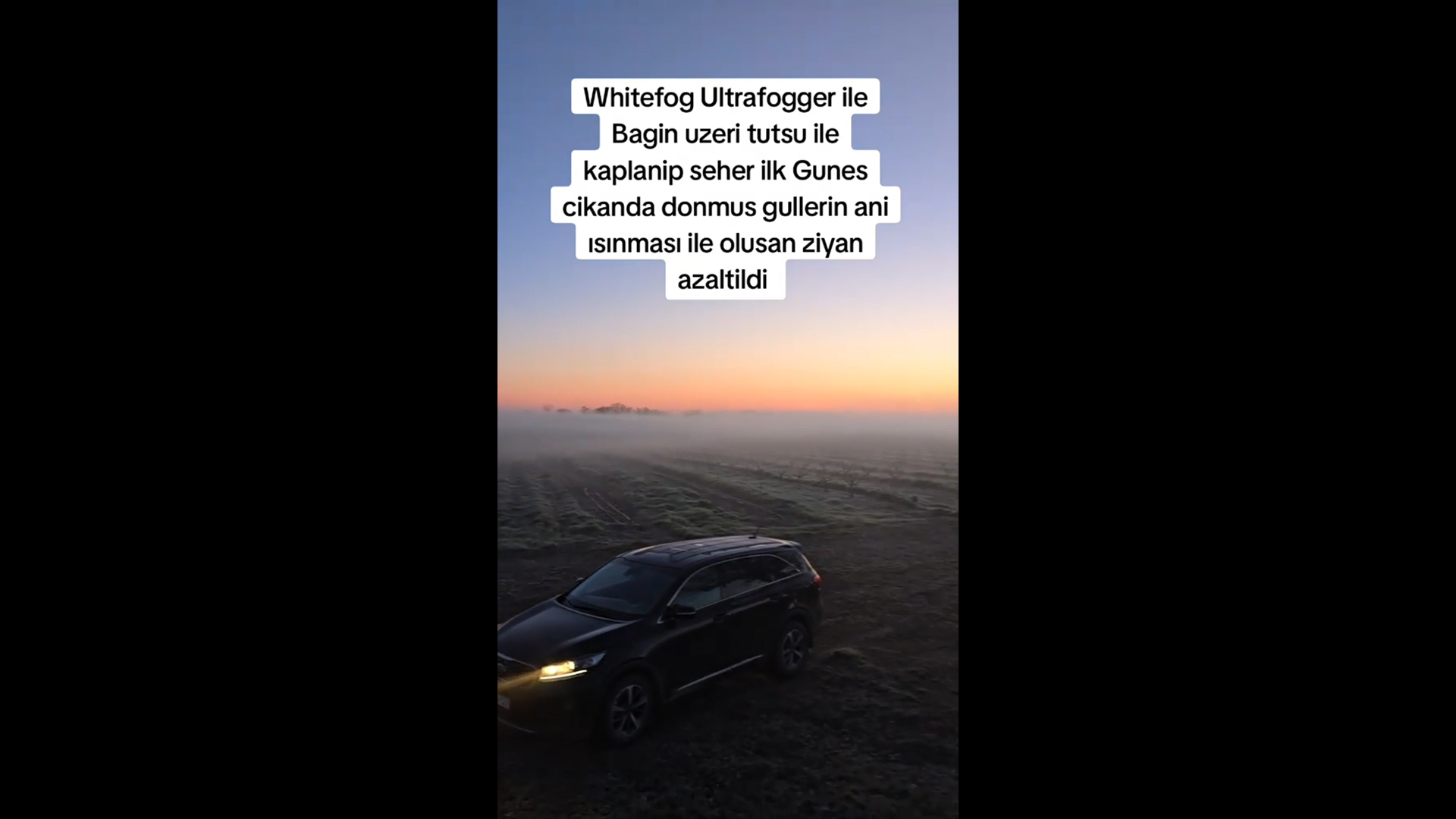


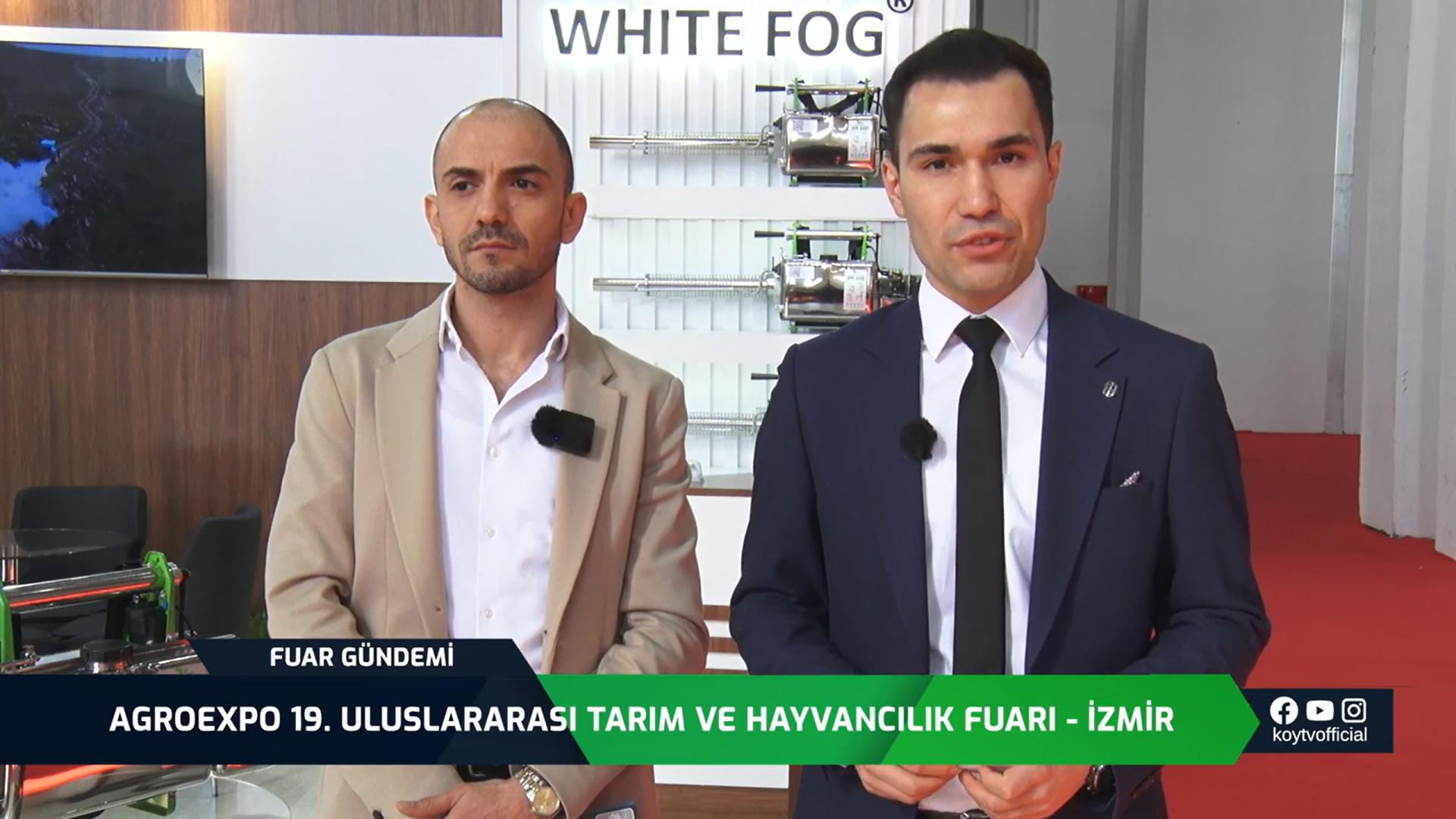
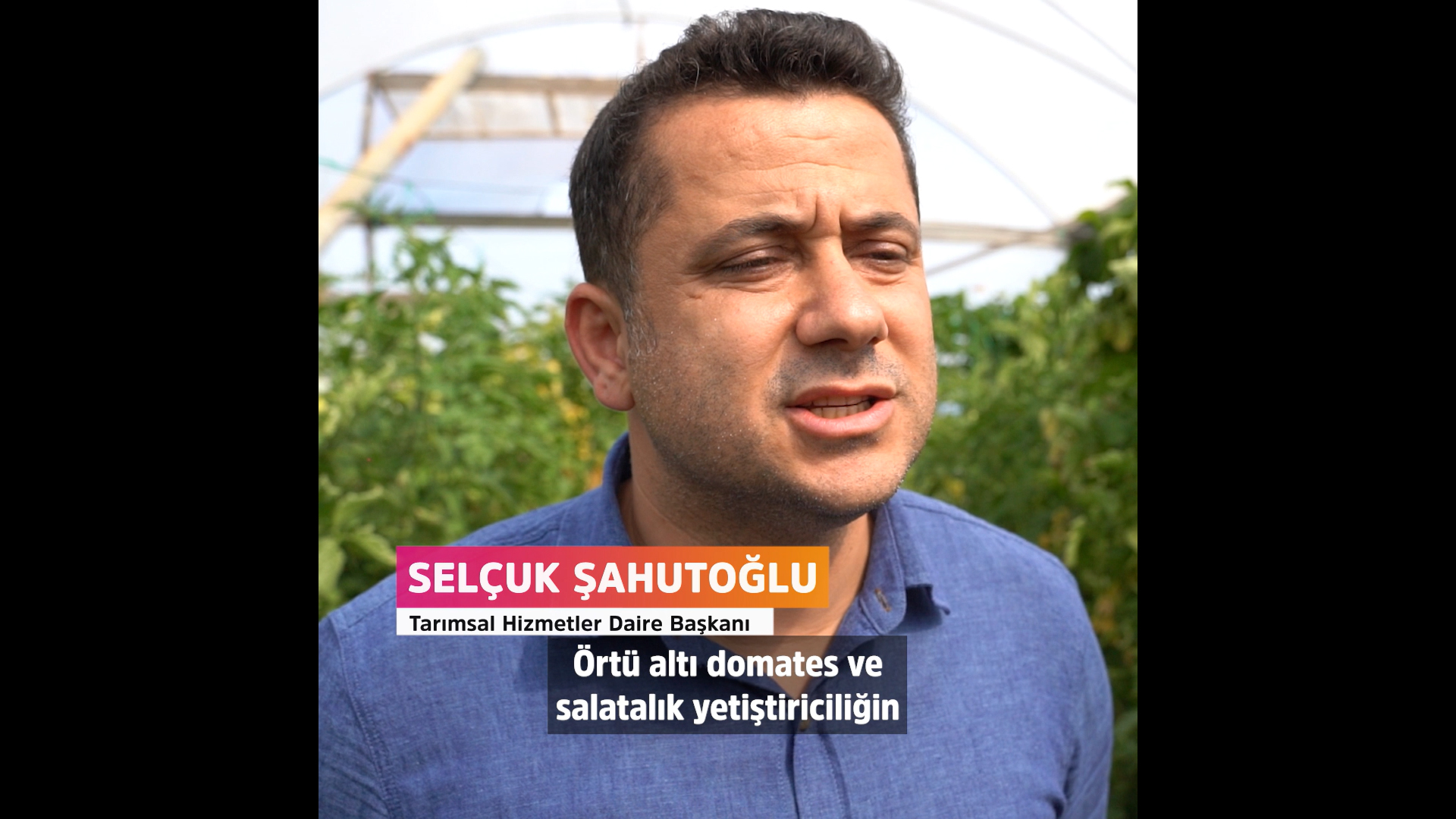

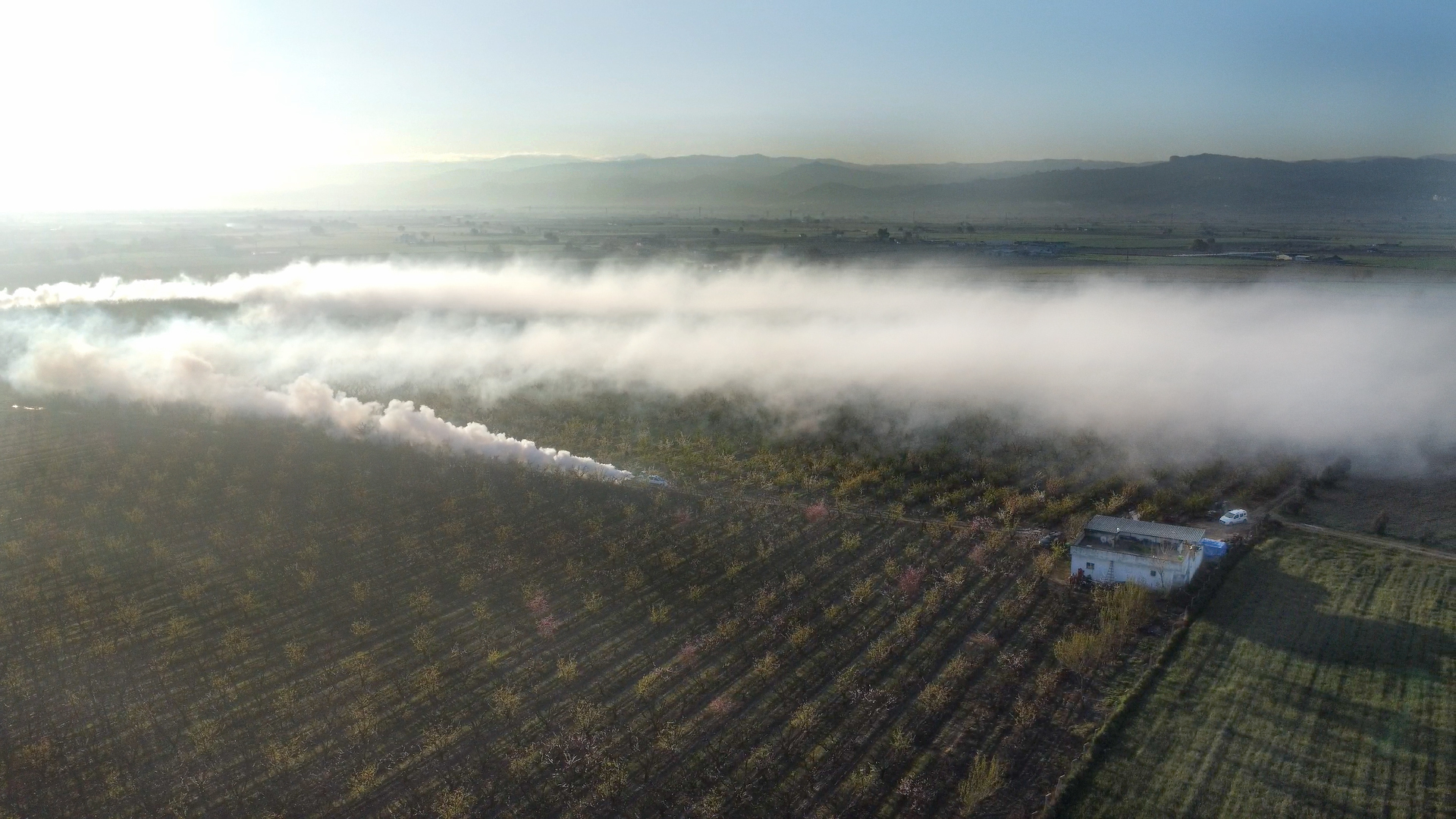
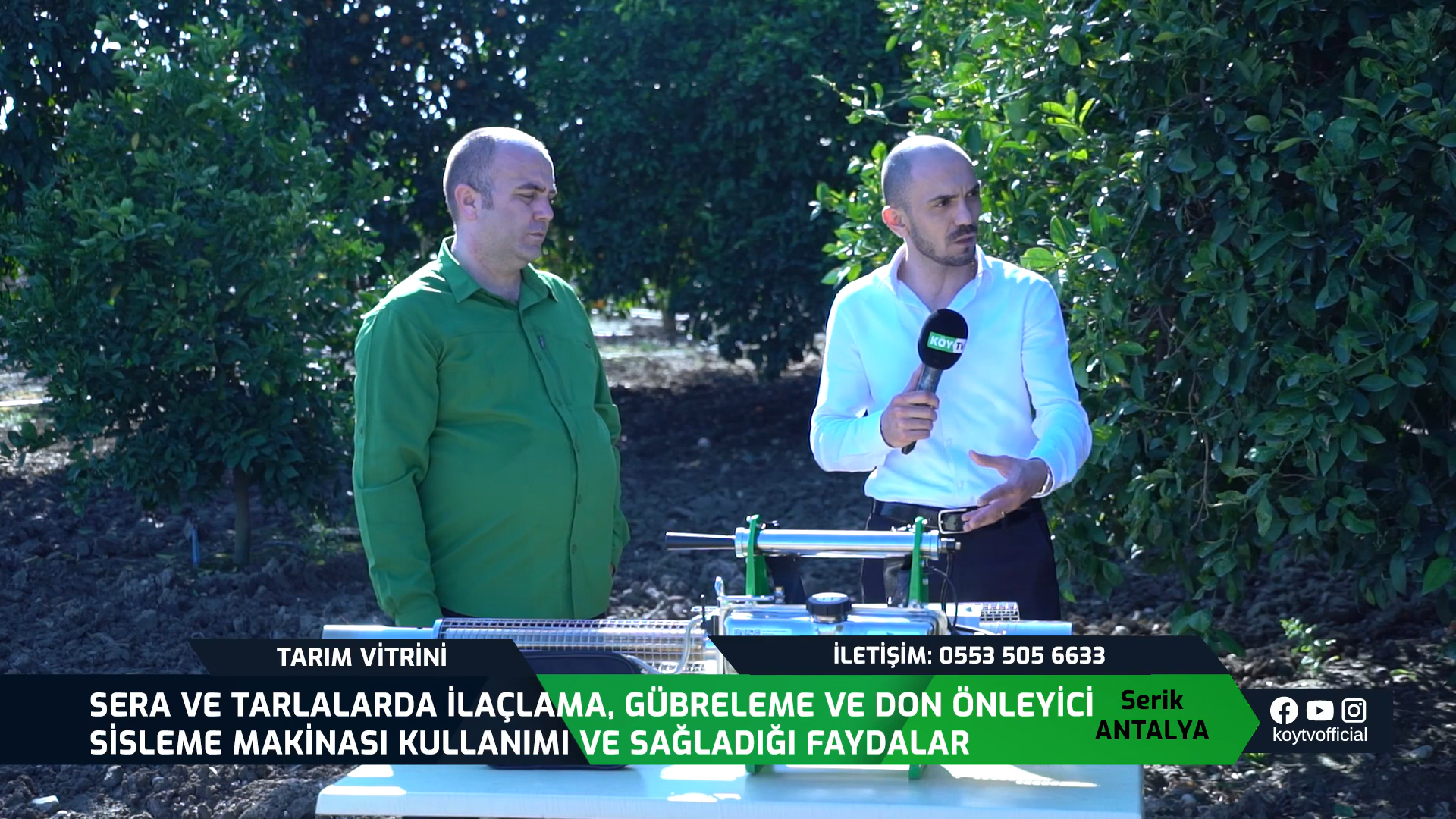
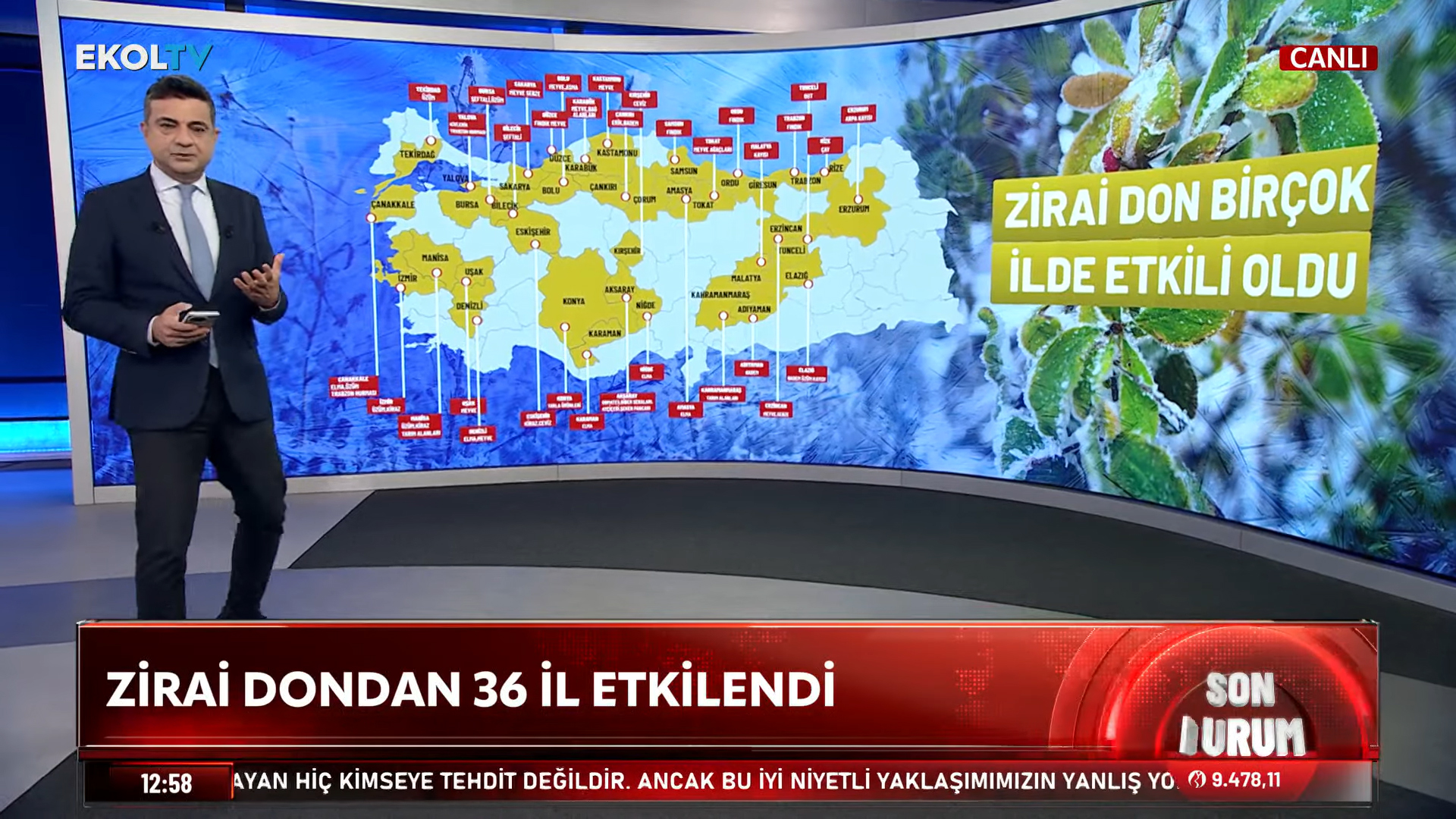
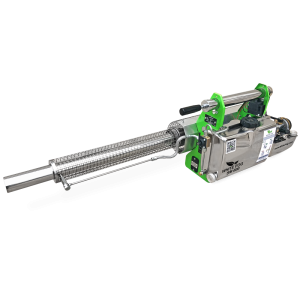
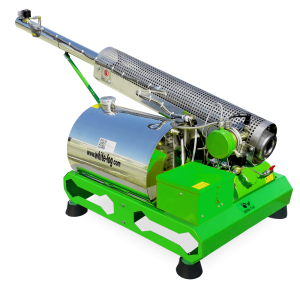
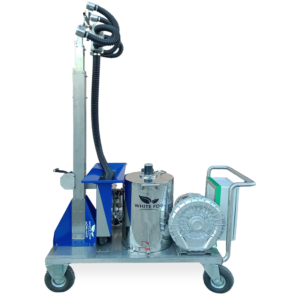
Reviews
There are no reviews yet.